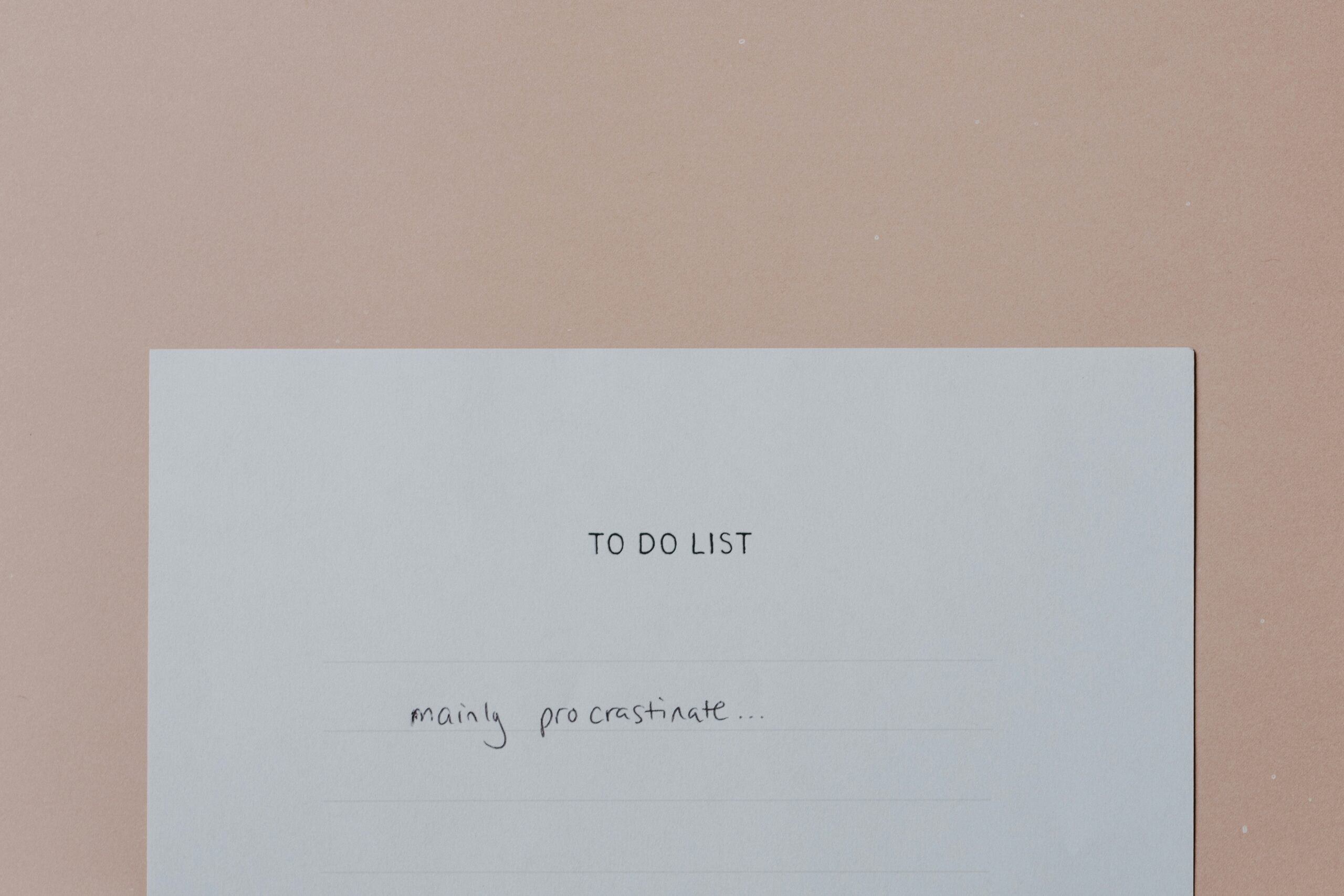Procrastination is the silent productivity killer that haunts millions of people daily. We postpone important tasks, let small responsibilities pile up, and watch our to-do lists grow longer while our motivation shrinks. But what if there was a simple strategy that could help you overcome procrastination and build unstoppable momentum? Enter the 2-Minute Rule a deceptively simple technique that can transform how you approach tasks and productivity.
What Is the 2-Minute Rule?
The 2-Minute Rule, popularized by productivity expert David Allen in his book “Getting Things Done,” states: If a task takes less than two minutes to complete, do it immediately rather than putting it off.
This principle operates on a simple premise: the time and mental energy required to organize, plan, and remember a small task often exceeds the time needed to simply complete it. By acting immediately on quick tasks, you prevent them from accumulating into overwhelming piles of work while building positive momentum throughout your day.
The Psychology Behind Why It Works
Reduces Decision Fatigue
Every time you encounter a task and decide to “do it later,” you’re making a decision that your brain must remember and revisit. The 2-Minute Rule eliminates this cognitive burden by providing a clear decision framework: if it’s quick, do it now.
Breaks the Procrastination Cycle
Procrastination often stems from the anxiety and overwhelm we feel when facing our growing list of responsibilities. By immediately handling small tasks, we prevent them from joining the intimidating pile of “things I should do,” reducing overall stress and mental clutter.
Creates Positive Momentum
Completing tasks, no matter how small, triggers a sense of accomplishment and progress. This psychological boost can energize you to tackle larger, more challenging projects. Success breeds success, and the 2-Minute Rule helps you stack small wins throughout your day.
Leverages the Zeigarnik Effect
Our brains have a tendency to remember incomplete tasks more vividly than completed ones. Small, unfinished tasks can occupy mental space disproportionate to their importance. By clearing these quickly, you free up mental resources for more significant work.
How to Implement the 2-Minute Rule
Step 1: Identify 2-Minute Tasks
Common examples of 2-minute tasks include:
- Responding to a simple email or text message
- Filing a document or putting something back in its place
- Making a quick phone call to confirm an appointment
- Washing a few dishes or clearing your desk
- Jotting down a brief note or idea
- Scheduling a meeting or appointment
- Paying a bill online
- Unsubscribing from unwanted emails
Step 2: Act Immediately
When you encounter one of these tasks, resist the urge to add it to your to-do list or promise yourself you’ll handle it later. Instead, take immediate action. This requires developing a new habit of asking yourself: “Can I complete this in two minutes or less?” If the answer is yes, do it right away.
Step 3: Be Ruthless About the Time Limit
The rule only works if you stick to the two-minute boundary. If a task will take longer, add it to your proper task management system rather than extending the rule. This prevents you from getting derailed by larger projects when you should be focusing on other priorities.
Advanced Applications of the 2-Minute Rule
The 2-Minute Rule for Habit Formation
Productivity expert James Clear adapted the 2-Minute Rule for building new habits in his book “Atomic Habits.” His version suggests starting new habits with actions that take less than two minutes to complete. Want to read more? Start with reading one page. Want to exercise regularly? Begin with putting on your workout clothes. This approach makes habit formation less intimidating and more sustainable.
Email and Communication Management
Apply the rule to your inbox by immediately responding to emails that require brief replies, filing messages that need no response, and deleting unnecessary communications. This prevents your inbox from becoming an overwhelming repository of delayed decisions.
Maintenance and Organization
Use the 2-Minute Rule to maintain clean, organized spaces. When you notice something out of place, if you can fix it in under two minutes, do it immediately. This prevents the gradual accumulation of clutter and disorganization that can drain your energy and focus.
Common Mistakes and How to Avoid Them
Mistake 1: Underestimating Task Duration
Many people consistently underestimate how long tasks will take. Be honest about timing – if you’re not sure a task qualifies, it probably doesn’t. It’s better to be conservative and maintain the integrity of the rule.
Mistake 2: Using It as an Excuse to Avoid Important Work
The 2-Minute Rule should complement, not replace, focused work on important projects. Don’t use it as a way to procrastinate on significant tasks by constantly finding small things to do instead.
Mistake 3: Applying It During Deep Work Sessions
There’s a time and place for the 2-Minute Rule. During dedicated focus sessions for important projects, don’t allow small tasks to interrupt your flow. Save the rule for transition periods or administrative time blocks.
Building Your 2-Minute Rule Practice
Start Small and Build Consistency
Begin by applying the rule to just one area of your life, such as email management or household tasks. Once it becomes automatic in that context, expand it to other areas.
Track Your Progress
Keep a simple log of 2-minute tasks you complete for a week. You’ll likely be surprised by how many small accomplishments you rack up and how much mental clarity you gain.
Combine with Other Productivity Systems
The 2-Minute Rule works well alongside other productivity methods like time-blocking, the Getting Things Done system, or the Pomodoro Technique. Use it during planning sessions or between focused work blocks.
The Compound Effect of Small Actions
The true power of the 2-Minute Rule lies not in any single task you complete, but in the compound effect of consistent small actions. A responded email prevents a follow-up conversation. A filed document saves time searching later. A cleaned workspace reduces stress and improves focus.
Over time, these micro-improvements accumulate into significant gains in productivity, organization, and peace of mind. You’ll find yourself with fewer nagging tasks, clearer mental space, and more energy to devote to your most important work.
Making It Stick
Like any productivity technique, the 2-Minute Rule requires consistent practice to become automatic. Start today by identifying three small tasks you’ve been putting off that could be completed in under two minutes. Do them right now, before you finish reading this article.
The beauty of the 2-Minute Rule is its simplicity. It doesn’t require special tools, complex systems, or significant time investment. It simply asks you to act on the small stuff immediately, creating space and momentum for the big stuff that truly matters.
Stop letting small tasks become big sources of stress. Embrace the 2-Minute Rule, and watch as your productivity soars and your procrastination habits begin to crumble. The path to getting things done starts with the smallest step, one that takes just two minutes to complete.


